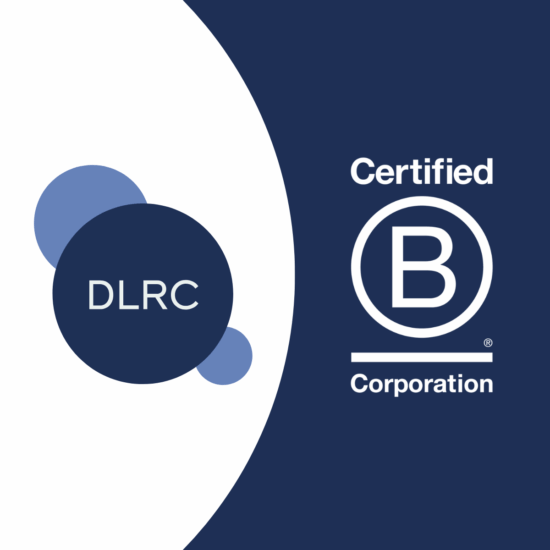Press Release: DLRC Group Becomes a Certified B Corporation
Published Dec 02, 2025
Published 01st October 2025

The inclusion of pregnant and breastfeeding individuals in clinical trials has long been a challenge in drug development, often resulting in a lack of robust data to guide therapeutic decisions for these populations. In a landmark move, the European Medicines Agency (EMA) has released the ICH E21 guideline for public consultation, marking a transformative shift in regulatory thinking. This new framework offers structured, ethical, and scientifically sound guidance to support the participation of pregnant and breastfeeding individuals in clinical research.
This article explores the key components of the proposed ICH E21 guideline, including early development strategy, systematic benefit-risk assessment, and protocol adaptations. It highlights how sponsors can proactively plan for the inclusion of this underserved patient population, generate meaningful safety and efficacy data, and navigate EMA’s regulatory expectations with confidence.
Regulatory professionals and clinical developers will gain a clear understanding of how to implement the principles of ICH E21 in practice and address the complexities of including pregnant and breastfeeding individuals in trials by reading this article. DLRC leverages its regulatory expertise to support sponsors in implementing these strategies. We ensure compliance while advancing inclusive and evidence-based development programmes.
Clinical trial organisers routinely exclude pregnant and breastfeeding individuals, which results in a critical lack of data in product labelling and forces healthcare providers and patients to make treatment decisions without sufficient information. This gap contributes to uncertainty, under-treatment, and potential harm from inappropriate medication use. Although up to 90% of women take medication during pregnancy or breastfeeding, manufacturers explicitly label only 3.7% of these medicines as safe, and over 70% lack any information on use in these populations. Alarmingly, one in three women choose to discontinue treatment, often for treatment-critical conditions such as epilepsy, asthma, infections, diabetes, depression, and autoimmune disorders, due to this uncertainty, risking serious health consequences.
With approximately 5 million pregnancies annually in Europe alone, the scale of impact is staggering. The proposed ICH E21 guideline, developed collaboratively by the EMA and the International Council for Harmonisation (ICH), marks a paradigm shift. It provides scientific, ethical, and regulatory principles for the responsible inclusion and retention of pregnant and breastfeeding individuals in clinical trials, both before and after marketing authorisation. By promoting proactive planning and early engagement with regulators, ICH E21 aims to generate robust clinical data enabling evidence-based decision-making. This ensures that future product labelling reflects the realities of those who need treatment during pregnancy and breastfeeding.
Early integration of nonclinical evidence into the development strategy is essential when considering inclusion of pregnant individuals in clinical trials. Sponsors should conduct thorough evaluations of Developmental and Reproductive Toxicology (DART) and Pre- and Postnatal Development (PPND) studies. These data, combined with advanced modelling techniques such as physiologically based pharmacokinetic (PBPK) modelling, help define the safety profile of the investigational product and guide the design and timing of subsequent clinical studies.
Researchers may conduct modified reproductive toxicology studies to further investigate specific concerns when they identify potential risks to pregnancy. ICH E21 emphasises that researchers can often extrapolate clinical safety and efficacy data from non-pregnant populations to pregnant individuals. This supports their informed inclusion in clinical research.
A parallel approach applies to breastfeeding individuals. Sponsors should assess relevant nonclinical data. This includes PPND studies, juvenile toxicology, and paediatric use data, to evaluate potential risks to the breastfed infant and the impact on lactation. As with pregnancy, PBPK modelling plays a key role in predicting drug concentrations in breastmilk and estimating infant exposure, absorption, and metabolism.
ICH E21 encourages sponsors to anticipate whether and when they may include breastfeeding individuals in clinical trials and to plan accordingly. This includes designing studies to determine the concentration of the investigational product in breastmilk, estimating the daily and relative infant dose, and collecting data on infant exposure, safety, and benefit. These steps mirror the emphasis placed on collecting pharmacokinetic and safety data in pregnancy to support informed decision-making.
Regarding breastfeeding participants, lactation studies are also a key component of the early development strategy. Lactation studies measure drug concentrations in breastmilk and model potential infant exposure. This helps to determine whether breastfeeding can be safely continued during trial participation. Researchers can conduct these studies as part of clinical pharmacology trials. They are essential for understanding whether the presence of the investigational product in breastmilk has any clinical impact on the breastfed infant. However, the guideline points out that milk composition and volume change throughout the breastfeeding period, depending on breastfeeding patterns and infant age. Researchers should include individuals at different stages of breastfeeding to ensure a complete safety profile.</p>
Ultimately, the early development strategy for breastfeeding individuals, like that for pregnant individuals, is rooted in the principle of inclusion through evidence. By planning early and leveraging both nonclinical and clinical data, sponsors can responsibly support the participation of breastfeeding and pregnant individuals in clinical trials. This ensures that therapeutic decisions are informed by robust, population-relevant data.
The ICH E21 guideline introduces a structured and evidence-based approach to benefit-risk assessment for the inclusion of pregnant and breastfeeding individuals in clinical development. Sponsors can conduct a systematic benefit-risk evaluation using a weight-of-evidence methodology once they have generated sufficient nonclinical and clinical data. The objective is to determine whether the risks of proceeding with trials in pregnancy and during breastfeeding a reasonable given the anticipated benefits.
The ICH E21 Guideline accounts for the fact that pregnancies may still occur in clinical trials despite rigorous contraception protocols. This is a crucial and imperative way to collect data on individuals who are in the very early stages of pregnancy. However, a comprehensive benefit-risk assessment must take place.
The decision to continue the study treatment should be informed by:
Where existing data suggests potential harm, sponsors must carefully assess whether the benefits of continued use in pregnancy outweigh the risks. Sponsors can assess identified risks and determine whether they can mitigate them through protocol adjustments or enhanced monitoring.
In parallel, the guideline outlines a comprehensive framework for benefit-risk assessment in breastfeeding individuals.
Key factors to consider include:
To support this assessment, sponsors should utilise lactation studies conducted in breastfeeding individuals receiving the investigational product as part of clinical care.
This structured benefit-risk framework reflects ICH E21’s commitment to ethical inclusion and evidence-based decision-making. By integrating these assessments early in development, sponsors can responsibly expand trial participation to pregnant and breastfeeding individuals. This will ultimately improve therapeutic access and safety data for these historically underrepresented populations.
The ICH E21 Guideline encourages sponsors to design trials that include pregnant individuals. These include studies without mandatory contraception requirements, uniquely enabling prospective data collection on early gestational exposure, which is otherwise difficult to capture. This approach necessitates a re-evaluation of contraception requirements in clinical trial protocols. The Clinical Trials Facilitation Group (CTFG) currently provides guidance through its Recommendations on contraception and pregnancy testing in clinical trials.
While both frameworks emphasise risk-based approaches to contraception and pregnancy testing, CTFG prioritises pregnancy prevention during exposure. ICH E21 supports inclusion when justified. Although no formal update to the CTFG guidance in response to ICH E21 has been announced, the EMA’s concept paper on updating its reproductive risk assessment guideline suggests change may be forthcoming. Until then, sponsors should engage early with regulators and clearly document their rationale for contraception requirements.
Experts in obstetrics, maternal-foetal medicine, and neonatology should contribute to protocol development based on ICH E21 recommendations. This will ensure appropriate study design, safety oversight, and interpretation of pregnancy-related outcomes. Pregnant individuals should be assessed using the same efficacy, safety, and PK/PD endpoints as the general population, with additional pregnancy-specific endpoints where needed. For example, when standard assessments like CT scans pose risks, alternative methods should be used to protect participant safety without compromising data quality.
Researchers should clearly define pregnancy-related assessments, especially when the disease may impact maternal or foetal health. The guideline recommends a structured plan for collecting outcome data on both the mother and child. It considers factors such as the investigational product’s properties, timing of exposure, and the feasibility of follow-up assessments. Routine prenatal and postpartum care, including ultrasound scans, laboratory tests, and neonatal consultations, can be aligned or combined with study-specific assessments. This will improve clinical accessibility for pregnant participants. Where feasible and permitted by local regulations, sponsors are encouraged to coordinate study visits with regular pregnancy-related clinical appointments. Or, they should offer remote options such as mobile or telemedicine visits to reduce participant burden and enhance engagement.
Extended follow-up may be necessary to capture delayed effects. Protocols should include provisions to suspend or discontinue treatment if safety concerns arise. Even small datasets from pregnant participants can inform product labelling. Researchers should interpret findings cautiously, especially regarding rare outcomes. Contextualising results within the known impact of the underlying condition is essential for meaningful analysis.
Researchers must design clinical trial protocols involving breastfeeding individuals to minimise risk to the infant while enabling systematic data collection. When scientific evidence suggests that the investigational product is unlikely to be absorbed in clinically meaningful amounts through breastmilk, or when the benefit-risk balance supports continued lactation, participants may be offered the option to breastfeed during the study.
To ensure oversight, the guideline recommends involving specialists in breastfeeding, postpartum physiology, and paediatric health in study design and monitoring. Neonatologists and paediatricians should be part of the study team. They can support appropriate evaluation of infant development and well-being throughout the trial.
Safety monitoring should continue after study completion for both the breastfeeding individual and the infant. If only the mother is exposed to the investigational product (e.g., when the participant continues lactation but discards the breastmilk instead of feeding it to the infant), the duration of follow-up should be determined case-by-case. This is based on factors such as the product’s half-life, mechanism of action, timing and duration of exposure, and expected time to onset of relevant outcomes. This is particularly important when assessing potential long-term effects. This includes developmental or neurocognitive outcomes.
In cases where both mother and infant are exposed, protocols should include plans to assess infant uptake at relevant timepoints. Studies should evaluate whether the absorbed amount may have short- or long-term implications for the child. This includes the frequency and severity of adverse events. Researchers should implement a tailored safety follow-up plan based on the nature of the exposure.
Follow-up assessments should consider the general well-being of the child. They should also consider any outcomes predicted from the pharmacological properties and safety profile of the investigational product. These measures are essential to ensure the inclusion of breastfeeding individuals in clinical trials is scientifically justified and ethically sound.
Recruitment and retention of pregnant and breastfeeding individuals in clinical trials must be approached with sensitivity and flexibility. This ensures ethical participation and meaningful data generation. The ICH E21 guideline urges researchers to make every effort to reduce the burden of study procedures on these populations. This includes aligning study visits with routine clinical care, offering remote or mobile visits, and minimising invasive or time-consuming assessments. Such measures not only support retention but also promote equitable access to research participation.
When planning recruitment, sponsors should consider the timing and context of inclusion. For pregnant individuals, this may involve allowing continued participation after pregnancy onset or designing trials that do not require contraception. For breastfeeding individuals, inclusion may depend on the expected level of infant exposure and the benefit-risk balance of continued lactation. Early engagement with patient communities and healthcare providers can help tailor recruitment strategies to participant needs and preferences.
Informed consent processes must be particularly robust and transparent. Researchers should clearly inform participants about the potential risks and uncertainties associated with investigational product exposure during pregnancy or breastfeeding. This includes possible effects on the foetus or breastfed child. Consent materials should be written in accessible language and reviewed by ethics committees with expertise in maternal and child health. The guideline stresses the importance of avoiding undue influence or coercion, especially given the vulnerability of these populations.
Consent should reflect the possibility of continued follow-up for both the participant and the child, even if treatment is discontinued. Researchers should offer participants the option to remain in the study for safety monitoring purposes, where appropriate. This approach supports long-term data collection and helps address gaps in knowledge about delayed or rare outcomes.
Key action points for Sponsors:
The ICH E21 guideline marks a significant step forward in enabling the ethical and evidence-based inclusion of pregnant and breastfeeding individuals in clinical research. Sponsors can generate meaningful safety, efficacy, and pharmacological data that reflect real-world patient needs by embedding these populations into an early development strategy.
This article has explored the foundational elements of the guideline. We have discussed the importance of early nonclinical evaluation, the implementation of systematic benefit-risk assessments and the design of inclusive protocols. Together, these components form a cohesive framework that supports responsible trial design and informed decision-making.
While the inclusion of pregnant and breastfeeding individuals presents unique scientific and operational challenges, the draft ICH E21 guideline offers a promising regulatory framework to address them. DLRC actively supports sponsors as they prepare for this evolving landscape. Our regulatory affairs specialists provide strategic guidance across all phases of development. We can support from protocol design and regulatory consultation to safety oversight and submission planning.
By partnering with DLRC, sponsors can align their development programmes with emerging global expectations. This will ensure they are inclusive, ethical, and ready for future regulatory adoption.
Contact us today to learn more about how DLRC can help you navigate the implications of ICH E21 and build inclusive development programmes. Get in touch with our team today by emailing us at hello@dlrcgroup.com.

Published Dec 02, 2025

Published Nov 14, 2025

Published Oct 20, 2025

Published Oct 01, 2025

Published Oct 01, 2025

Published Oct 01, 2025

Published Oct 01, 2025

Published Oct 01, 2025

Published Sep 29, 2025